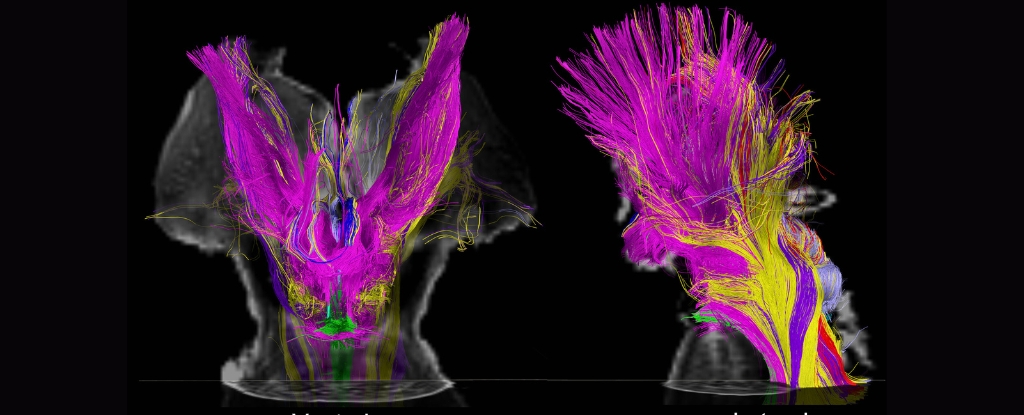At the base of the brain lies the brainstem, a thick rope of nerve cells that, according to new research, could sustain wakefulness in human consciousness.
The findings, by a team in the US and France, bolster previous work and could lead researchers to new understandings of altered states of consciousness, such as comas and vegetative states.
It could also help them figure out why some people have some vague awareness or remain alert to their surroundings under anesthesia while others fully ‘wake up‘ during surgery.
Despite scientists and philosophers prodding the brain and probing human consciousness for centuries, researchers have only come to understand it in fairly loose terms.
The current thinking is that consciousness, the ability to sense the world and our own existence, can be split into two dimensions: arousal (or wakefulness) and awareness.
In 2016, Harvard Medical School researchers uncovered, for the first time, a connection between the brainstem, which is thought to regulate arousal, and parts of the brain involved in awareness.
In hospitalized patients with brainstem lesions, most of the unconscious patients had damage to one particular part of their brainstem called the rostral dorsolateral pontine tegmentum, whereas only one conscious patient did. The newfound connection between the brainstem and two cortical regions was also disrupted in comatose patients and those in a vegetative state, as seen on brain scans.
Neurologist Brian Edlow was part of that team, and he embarked on this new study with colleagues from the Massachusetts Institute of Technology (MIT) and the University of Tours in France because the mapping of neural networks in the brainstem has stalled compared to efforts to map the cortex, the outer layer of the brain.
That’s partly because neuroimaging techniques couldn’t tease apart the activity of individual neurons bundled into the brainstem or networks emanating from it, upwards into the brain.
In this new study, Edlow and colleagues focused on finding traces of resting wakefulness: where the brain is in ‘standby mode’, capable of processing information but not actively engaged in a task or particularly attentive.
They named this proposed web extending out of the brainstem the default ascending arousal network (dAAN) – default for the way no active input is required – and hoped to find more evidence of its connections to centers of awareness in the cortex.
Such connections have been sketched out roughly using a variety of techniques in multiple animal studies, “but prior evidence of such interconnectivity is limited in the human brain,” Edlow and colleagues write in their published paper.
The team used MRI to scan three postmortem brains donated to research, and examined MRI data of another 84 healthy people who had their brains scanned as part of the Human Connectome Project, a US-led effort to map neural connections brain-wide.
In the midbrain, they found a widely connected hub in the ventral tegmental area (VTA) that displayed extensive connectivity to other newly mapped nodes of the dAAN. The VTA was also well connected to another network up in the cortex known for its role in conscious awareness.
frameborder=”0″ allow=”accelerometer; autoplay; clipboard-write; encrypted-media; gyroscope; picture-in-picture; web-share” referrerpolicy=”strict-origin-when-cross-origin” allowfullscreen>
Before this, the VTA was thought to mainly modulate behavior and cognition, two very active processes, but this study adds to mounting evidence that the VTA could also help sustain wakefulness, and by extension, awareness.
Two other direct connections linking the brainstem and cortex, and lacing together arousal and awareness, were found in the lateral forebrain bundle and medial forebrain bundle, which are found tucked under the front lobe of the brain.
The researchers acknowledge that their study is only small; other brains might reveal something different. With something as slippery and as fluid as consciousness, there are also many other interpretations of where human consciousness might be found in the brain or arise from.
The study has been published in Science Translational Medicine.





